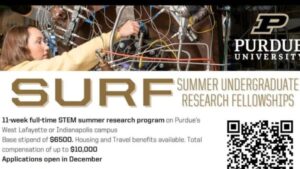The Getty/ACLS Postdoctoral Fellowships in the History of Art support an academic year of research and/or writing by early-career scholars from around the world whose projects stand to make substantial and original contributions to the understanding of art and their histories. The program welcomes scholars from anywhere in the world who bring perspectives and backgrounds that are historically underrepresented in the field of art history. This program is made possible by a grant from the Getty Foundation.
ACLS invites applications for Getty/ACLS Postdoctoral Fellowships in the History of Art, made possible by the generous support of the Getty Foundation. These fellowships provide early career scholars from around the world time to undertake sustained research and/or writing for projects that will make substantial and original contributions to the understanding of art and its history. The program funds projects at all stages of development, and the ultimate goal of the project should be a major piece of scholarly work by the applicant. This program does not fund creative work (e.g., novels or films), textbooks, straightforward translation, or pedagogical projects.
Getty and ACLS share a commitment to fostering greater diversity within the academy and we ask reviewers to take diversity, equity, and inclusion as serious considerations. We are especially interested in supporting promising scholars who bring perspectives and backgrounds that are historically underrepresented in the field of art history, and who were trained at and/or affiliated with institutions from all regions of the world.
ACLS will award 10 fellowships, each with a stipend of $60,000, plus $5,000 for research and travel during the award period. The fellowships are portable: a fellow may elect to take up the award at any appropriate site for the work proposed, anywhere in the world.
Eligibility Requirements:
- Applicants must have a PhD that was conferred between September 1, 2017 and December 31, 2021.
- Applicants who earned their PhDs in any humanistic field may apply, so long as they demonstrate that their research draws substantially on the materials, methods, and/or findings of art history, and contributes to the field. Scholars may propose new approaches to art historical scholarship and/or explore connections between art history and other humanistic disciplines.
- This program welcomes proposals from applicants from anywhere in the world, without restriction as to citizenship, country of residency, location of work proposed, or employment.
- An application must be completed in English by the applicant. (Please see our FAQ for guidance for international applicants.)
Application Procedure:
Applications must be submitted online and must include:
- Completed application form
- Proposal (no more than ten pages, double spaced, in Times New Roman 11-point font). The proposal must include the following subsections, and you may allocate available page space among these three sections as you see fit:
- Project Description, including a summary of the project’s current stage of development, grounding in the relevant scholarly literature, theoretical framework(s), and significance for the field.
- Project Workplan, including a description of what will be accomplished during the fellowship term; what methodological approach(es) and materials will be used; the scholar’s preparation to undertake the work described therein; and a rationale for the proposed research site(s).
- Expected Products (book, journal article, digital project, etc.)
- Optional: Up to three additional pages of images or other supporting non-text materials. Each image should include a citation, photo or image credit (where applicable), and a one-to-two sentence explanation of why the image was selected for inclusion.
- Project bibliography (no more than two pages, in Times New Roman 11-point font)
- Publications list (no more than two pages, in Times New Roman 11-point font)
- Brief personal statement of up to one page (double spaced, Times New Roman 11-point font) describing your intellectual trajectory as a scholar.
- Writing sample of no more than 15 pages, inclusive of images and all citations (footnotes or endnotes), double spaced, in Times New Roman 11-point font; the sample may be a complete work or a representative excerpt from a book or journal article. Writing samples must be in English, though citations may be in other languages (with translations provided). Excerpts from books and journals that do not meet the formatting guidelines will not be accepted. An application containing a writing sample that does not conform to stated length and formatting requirements will be deemed ineligible for the competition.
- Two reference letters
For More Information:

